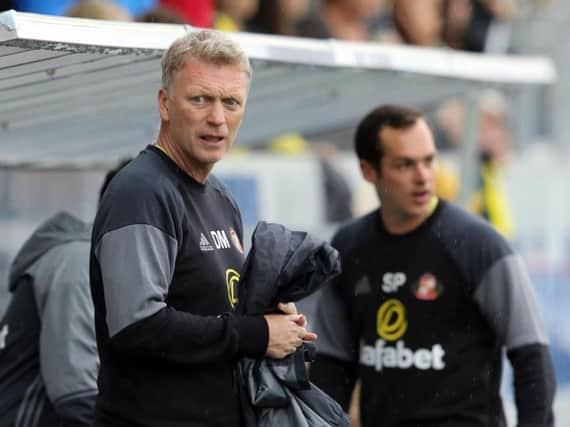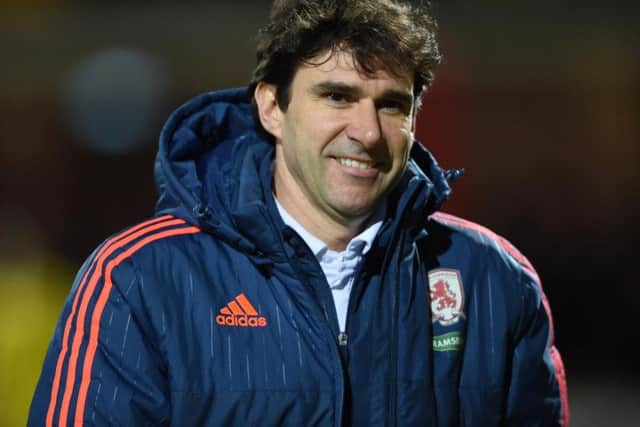Sunderland v Middlesbrough: How do David Moyes and Aitor Karanka compare?


The two managers have come from diverse backgrounds and while Moyes has racked up more than 450 games as a Premier League manager, his opposite number Karanka has overseen just the one.
But what can we expect when the pair go head to head this weekend?


Here is a look at some of their attributes.
Background:
Advertisement
Hide AdAdvertisement
Hide AdBorn in Glasgow, Moyes went on to play professionally as a centre back for the likes of Celtic, Bristol City and Preston North End.
It was at the latter where he received his first managerial gig, and in his four-year spell Moyes was able to lift Preston from the fourth division to the brink of the Premier League - only to lose in the Championship Play-off Final to Bolton in 2001.


From there Moyes went to Everton, where he built a reputation as one of the Premier League’s most established managers. In Moyes’ eleven years at Goodison Park, the Toffees regularly finished in the top half of the table and Sunderland fans will hope he can repeat a similar trick on Wearside.
Considerably shorter stints at Manchester United and Real Sociedad may not have gone to plan, but Moyes is back in the Premier League now.
Advertisement
Hide AdAdvertisement
Hide AdBoro boss Karanka also applied his traits as a centre half in his playing days. He started his professional career at Athletic Bilbao before making 93 appearances for Spanish giants Real Madrid.
He returned to the Bernabeu in 2010 as Jose Mourinho’s assistant, and Karanka has maintained a close relationship with the current Manchester United manager throughout his time on Teesside.
Karanka took charge at the Riverside in November 2013 and after missing out in the play-off final last year, the Spaniard rebounded by guiding the Boro back to the Premier League in May.
Personality:
When Moyes arrived at Sunderland a couple of weeks ago he quickly insisted that he deserved more time when he faced the impossible job of replacing Sir Alex Ferguson as the Manchester United manager.
Advertisement
Hide AdAdvertisement
Hide AdFor many years he was a comfortable figure at Everton, and he can be proud of what he achieved there, but he also showed his ambition when he took the job at Old Trafford.
In his first press conference on Wearside, Moyes demonstrated that he has confidence in his own ability and stated that he still believes he can manage at the highest level.
In his three years at Boro, Karanka has shown that he can be an emotional character. From the outside he may not look like one, but behind his tranquil demeanour there is plenty of passion that burns within the Spaniard.
He hasn’t developed the Mourinho arrogance but he does share plenty of other similarities with his former colleague and good friend.
Advertisement
Hide AdAdvertisement
Hide AdThe way Karanka motivated his players last campaign was comparable to the methods which Mourinho has used in the past and in the end Boro edged over the line.
As we’ve seen in the past, though, there is always the possibility that too many opinions can cause a severe backlash and it’s still unclear what exactly happened when Karanka missed Boro’s game away at Charlton back in March.
Tactics:
In terms of tactics both Karanka and Moyes like to prioritise the defensive side of the game so a low scoring outcome could be on the cards.
Karanka has stuck with his favoured 4-2-3-1 formation throughout his time at Boro and against Premier League opponents he often likes his team to play on the counter attack.
Advertisement
Hide AdAdvertisement
Hide AdEven last week at home against Stoke, Boro were happy to concede possession to ensure that they were well organised and difficult to break down. That allows the likes of Gaston
Ramirez and Albert Adomah to be a threat on the break.
At Everton, Moyes’ sides were also notorious for their defensive stability, though it is unclear whether the new Sunderland boss has had enough time to drill his players sufficiently after only taking the job last month.
Against City, Moyes played with central midfielders, including John O’Shea, to try and contain Pep Guardiola’s team.
At home the Sunderland boss will surely want his side to play more on the front foot, though it is unclear whether he will change the formation or personnel.